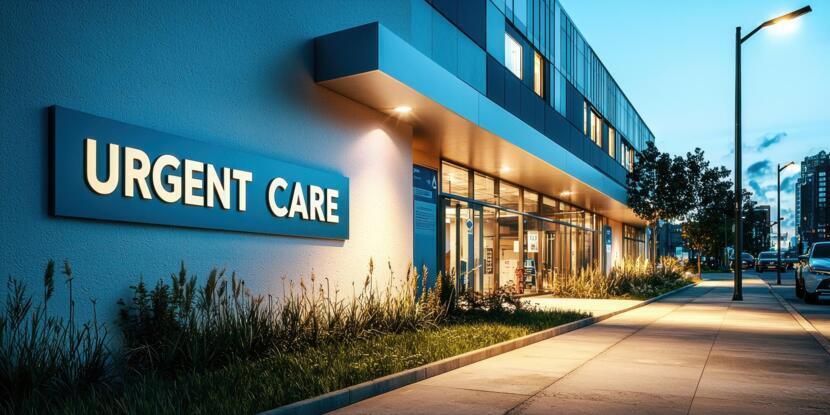
Expert Insights
Emergency Department: Use Wisely (and Sparingly!)
With the status of healthcare today, everyone wants to get in and have their symptoms and health evaluated. A lot of people will simply use the closest emergency department (ED) out of convenience, or because it takes weeks or months to get into a regular healthcare provider and you want to feel better before then. Before your urge to go to the local ED has you scrambling for your car keys and phone charger, some things to consider.
Consider the ED visits for serious stuff, not for catching a cold or mending a stubbed toe. Jump into it when your health situation is doing a nosedive; otherwise, other options are often smarter, cheaper, and faster.
When It’s Definitely Needed
Life-or-death scenarios: Chest pain, stroke signs (like slurred speech), severe breathing trouble, unconsciousness, heavy bleeding, or trauma—these big-ticket emergencies need immediate attention. Data show that roughly 155 million ED visits occur annually in the U.S., with about 17.8 million leading to hospital admission and 3.1 million requiring critical care.
Time-sensitive injuries: A broken bone, head trauma, or major burn? Minutes matter. The Centers for Disease Control (CDC) emphasizes serious traumas be taken to closest trauma center which are equipped for life-threatening cases .
When It’s Probably Overkill
Minor issues: Colds, mild fever, sore throat, minor sprains, rashes without systemic symptoms—these are best treated at urgent care or your regular doctor. Visits for preventable issues cost billions: about $8.3 billion/year for mental health alone, and ED costs average $269 per encounter (range $99–$1,863) .
Unnecessary imaging: X-rays and CT scans when not indicated—like minor ankle bumps—don’t help and can introduce risks. Overuse of diagnostic imaging is a well-known issue. Let your healthcare provider determine when you need to have imaging and the type of imaging needed.
Treat-and-release costs:A 2021 Healthcare Cost and Utilization Project (HCUP) study found that ED visits where patients were treated and sent home varied dramatically, with costs rising even as visit numbers dropped .
Why This Matters (Beyond the Pain)
ED overcrowding delays care for true emergencies.
Higher costs: ED visits are significantly more expensive than primary or urgent care—a single emergency department visit can cost seven times more than a community health center visit.
Strain on staff and resources: Hospitals reported rising ED supply costs—nearly a 32% increase from 2019 to 2022.
Situation & Where to Go
ER
- Chest pain
- stroke signs
- fainting
- major trauma
Urgent Care
- Moderate pain
- sprains
- sore throat
- fever
Primary Care
- Prescription refills
- ongoing chronic issues
- Just worried, no serious symptoms
Use the ED like emergency services: when something’s really broken, and time is short. For everything else, urgent or primary care is faster, cheaper—and less chaotic. It frees up emergency seats for people who truly need them—so everyone gets help when it matters most.
ReferencesCenters for Disease Control (2024). *FastStats – Emergency Department visits*. Centers for Disease Control and Prevention. [https://www.cdc.gov/nchs/fastats/emergency-department.htm](https://www.cdc.gov/nchs/fastats/emergency-department.htm)
Roemer, M. (2024). *Costs of treat-and-release emergency department visits in the United States, 2021* (Statistical Brief No. 311). Healthcare Cost and Utilization Project. [https://hcup-us.ahrq.gov/reports/statbriefs/sb311-ED-visit-costs-2021.pdf](https://hcup-us.ahrq.gov/reports/statbriefs/sb311-ED-visit-costs-2021.pdf)
Stiell, I. G., et al. (2024). *Reducing avoidable ED visits for mental health could cut billions in costs.* *American Journal of Managed Care.* [https://www.ajmc.com/view/reducing-avoidable-ed-visits-for-mental-health](https://www.ajmc.com/view/reducing-avoidable-ed-visits-for-mental-health)
National Center for Health Statistics. (2024). *National Hospital Ambulatory Medical Care Survey: 2019 Emergency Department summary tables*. Centers for Disease Control and Prevention. [https://www.cdc.gov/nchs/nhamcs](https://www.cdc.gov/nchs/nhamcs)
World Health Organization. (2024). *Unnecessary health care*. In *Health Topics*. Retrieved from [https://en.wikipedia.org/wiki/Unnecessary\_health\_care](https://en.wikipedia.org/wiki/Unnecessary_health_care)









